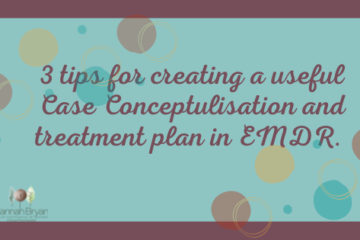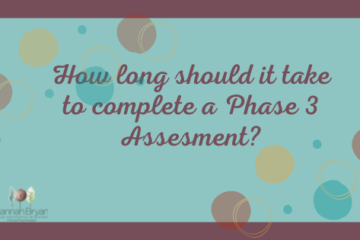Have you completed your EMDR training, loved the training and know that you want to develop further in the model? Maybe you did the training a while back and you are just starting to think about how you move towards accreditation. Maybe you just feel completely overwhelmed by not knowing what is expected of you, the paperwork involved or the prospect of having to record sessions. Read on to find some simple things you can do to make the process as easy as possible.
Strike whilst the iron is hot.

As an EMDR facilitator, it’s fantastic to feel the enthusiasm in the room when you have completed a training. Generally therapists leave enthusiastic and excited about integrating EMDR into their clinical work. Momentum keeps things going at a fast pace so keep going and use EMDR as often as you can with your clients.
Stay in touch with colleagues that did the training with you and meet for check in sessions to see how EMDR is working for you. You could create groups, a facebook or whats app group where you can talk about anything and everything to do with EMDR.
Meet with peers in your service who are also trained in EMDR, create a specialist interest group at your work. All this will help to keep the momentum established in training going.
Just get going and using EMDR in your therapy work as soon as you can. Use it or you lose it!
If you have had a break and have lost your confidence, try a refresher course. These can often help to get the momentum going again!
Know before you start what is expected of you.

It often feels like Accreditation is too much. It can feel hard to sift through all the paper work to pull together what it expected of you. The thought of recording your session or having a supervisor observe you can just feel overwhelming. As therapists, we are holding together so many demands and often work within different models of therapy that also come with their separate demands. It can sometimes just feel too much!
When I trained I felt I invested too much early on in learning more about EMDR with different populations, dissociation etc. Whilst this was all helpful, I wish I would have done less of it! I wish I would have embedded my knowledge of the standard protocol first. The trainings are fantastic but there is so much we forget, so much that may not have made sense to us at the start that starts to connects when we use it with more and more clients. The refresher days I did a few years after I had started using EMDR were invaluable.
The EMDR Association provide on its website a list of the paperwork you and your EMDR Consultant need to complete for accreditation. (Click here to find out more)

I have developed an ‘Demystifying the process of EMDR Accreditation’ workbook that guides you through the knowledge and skills you need to develop and suggests questions or exercises you can do to enhance this experience. Click here to find out more about this. I have recently added a quiz that will help you test your EMDR knowledge and provide you with the answers to those things you may have always been a little unsure about!
Understand the expectations.
You need to have used EMDR with at least 25 clients and all of these clients need to be discussed in depth with your EMDR Consultant Supervisor.
You need to have received a minimum of 20 hours of individual or group supervision.
Your Consultant EMDR Supervisor needs to see evidence of your competency in EMDR either through watching recordings of your sessions or sitting in and directly observing your work.
You can apply for Accreditation 12 months after you have completed you standard EMDR training.
The EMDR Association paperwork will explain more about the competencies you need to develop. I cover this in my work book whilst also suggesting some exercises you can do to help demonstrate these competencies.
Practice, practice practice
The more you do EMDR the more you will develop your skills and knowledge because once you start things will click into place, it will begin to make more sense. So just keep putting one foot infront of the other and moving in a positive direction.



0 Comments